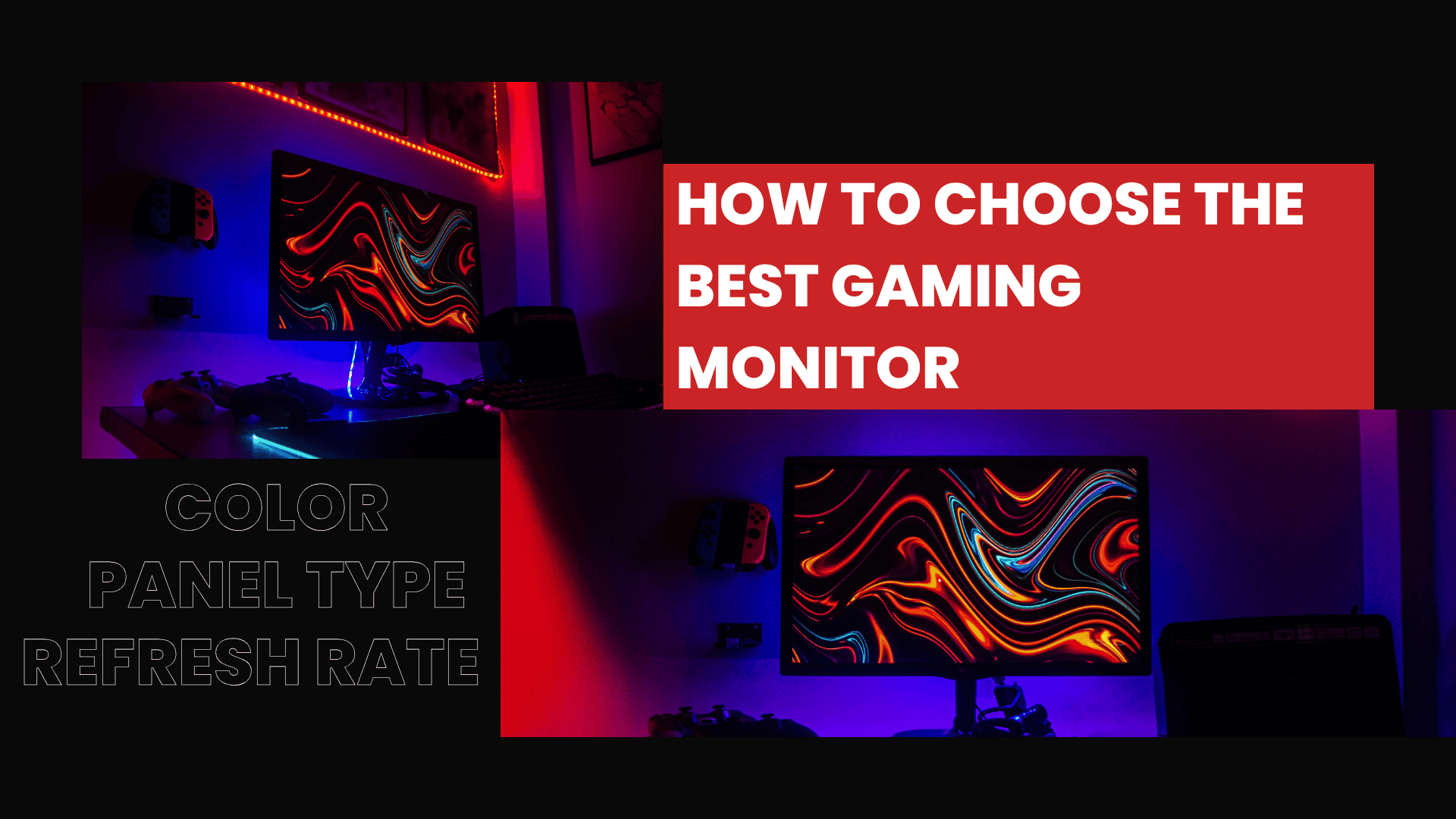Picking a gaming monitor isn’t always a straightforward decision, because how do you know which is the best gaming monitor? Brands will market their key features, but often when comparing sizes and screens, they’re pretty similar, so what else do you need to look at? Size, refresh rate, color quality, panel type, and audio options are key features to consider when selecting the best gaming monitor for your needs. Let’s look at why those specs matter and some good gaming monitor options for you.
Monitor Size
Monitor size matters for gaming because it directly connects to how well you can enjoy different types of games. FPS games require focus and precision, so a smaller screen like a 24 or 27-inch makes it easier for you to see the competition and take them out. For open-world or adventure games, having a larger screen like a 27, 32, or 34-inch helps with full game immersion. Having a flat or curved screen also affects your experience. A flat screen is better for competitive gaming and focus, while a curved screen changes the way the size feels and can add to the immersion. Here’s a great option for a large, curved gaming monitor from Samsung:
Refresh Rate
The refresh rate on a monitor determines how clear and reactive a game is, providing smoother gameplay. With smoother motions, reduced blur, faster responsiveness, and improved immersion, every gaming session feels great with a high refresh rate monitor. A good refresh rate for most gaming is 120Hz or 144Hz, while a higher one, like 360Hz or 540Hz, is good for intense competitive gaming. Esports monitors often have other specific features as well to enhance their refresh rate and visual quality. Here’s a great esports gaming monitor option from Alienware:
Color Quality
Video game developers put a lot of time and energy into the visuals of their games, so it’s important to have a monitor that displays those visuals accurately. Monitors will list different color spaces in their details, along with their visual quality. Pairing sRGB along with 4K HDR or UHD is the best way to go, but you can also adjust your color preferences on the monitor. A few even offer custom color adjustments based on the type of game you’re playing (FPS, RPG, SPG, etc.). Here’s a great option for a colorful and vibrant monitor from MOBIUZ:
Panel Type
Panel types do play a role in how the rest of the above factors affect your overall experience. The most common in gaming monitors are TN, IPS, and VA, with OLED and Mini-LED growing in popularity. TN is better for fast response times and competitive gaming, IPS is good for wider viewing angles and colors, VA is good for deeper blacks, and OLED and Mini-LED have the most vibrant and bright colors. IPS is the most common for gaming monitors because it’s always a good option. However, VA is great for deeper blacks and keeping up with those high refresh rates. Here’s a great option for a VA panel gaming monitor from Acer:
Audio Options
Not every gaming monitor offers speakers; many gamers connect with their headphones or an external speaker system. You may not need to check if a monitor has speakers, but it’s important to check the connectivity options to make sure you can connect to your audio devices by cord or Bluetooth. However, it’s always best to have a well-rounded gaming monitor that can do what you need, so getting one with a basic speaker system will ensure you always have audio. Here’s a great option for a gaming monitor with a built-in speaker system from MSI:
Each gaming monitor brand has good options for what you need, so it’s important to break down the key features you’re looking for and find one that matches your desired specs. Are you a competitive gamer, a casual gamer, or looking for a fully immersive experience? Time to find the best gaming monitor for you!






